This is a follow-up to my earlier and already updated article discussing the UCL investigations of David Latchman, heir of a billionaire philanthropist, UCL professor and Master of Birkbeck, University of London. After one of Latchman investigators spoke out exclusively on my site, I was approached by a source who shared with me two original and uncensored Latchman investigation reports. The key difference to those obtained from UCL under FOIA by Buzzfeed is: all scrutinised papers are listed, and all people involved are named.
We learn that some of the publications which were set for retraction for being fraudulent, and which Latchman or his coauthors agreed to retract, were merely corrected. And sometimes nothing at all happened, despite officially confirmed evidence of fraud, publicly available on PubPeer, which has quite grown since the investigations concluded to affect almost 70 Latchman coauthored papers (more here and here). The journals and publishers primarily to name and shame here are: Circulation and Circulation Research (American Heart Association), Cell Cycle (Taylor & Francis), Oncogene (Nature Publishing Group, Springer Nature) and J American College of Cardiology (Elsevier).
The investigative reports are here (click to to download):
The investigator who had enough of lies
The Latchman investigator who previously contacted me was John Hardy, award-winning geneticist, UCL professor for neurology and Fellow of Royal Society. He provided this statement:
Dear Dr Schneider
I was referred by a colleague to your article on the Latchman affair (https://forbetterscience.com/2019/07/08/the-return-of-david-latchman-show/) which is largely accurate. I was the chair of the first committee investigating the allegations and, when appointed, fully expected them to be baseless. However, to my horror and that of my fellow committee members, nearly all of the ones we could check were correct (see pubpeer https://pubpeer.com/search?q=+David+S+Latchman). Our report was very clear that Dr Latchman, as senior author, should bear the weight of the responsibility especially as there was no other author in common to the papers. Our report was not at all a cover up although it was watered down in response to objections from Dr Latchmans expensive lawyers. The chief weakness was that there was no direct evidence that Dr Latchman himself had ordered the fraudulent image manipulation endemic to many of his papers. When our report was released we were horrified that his current employer Birkbeck University put out a press release saying he had been cleared himself of fraud and objected internally to the way this release misrepresented our report.
There were many papers we did not investigate for lack of time and other allegations of fraud were made. A second committee, completely independent of ours (I did not know it’s members until after it reported) investigated the second tranche of papers and reached exactly the same conclusion with exactly the same outcome with again, a very misleading response from the Birkbeck press office. That committees members, like mine were extremely unhappy with this.
The fundamental problem is that unless there is documentation that a PI has instructed the postdoc or student to fabricate data the burden of proof of guilt cannot be achieved.
I would additionally note that the only types of fraud we can see are image manipulation and the use of the same images with different legends in disparate manuscripts. As a glance at pubpeer will show there are multiple examples of this in his work. The idea that all other papers from the Latchman lab are reliable would seem to me to be very unlikely.
I would also suggest this overall constitutes financial fraud. since I presume these data either directly or indirectly were used to support promotions and grant applications.
In my mind last/senior author position means one is taking responsibility for the integrity of the work. Dr Latchman and Birkbeck apparently do not agree. And as Master at Birkbeck he will be the final arbiter of any other allegations of fraud at this once proud institution. He also sits, apparently, on National Ethics Committees (https://en.wikipedia.org/wiki/David_Latchman). I think this is an unfortunate outcome.
John Hardy PhD FRS
Latchman namely engaged one of the most expensive London law firms, Mishcon de Reya, to help UCL with the investigation of his papers. The lawyers according to a source even got to edit the final misconduct reports. For example, they twisted the fact that investigators were unable to screen all the massive evidence of data manipulation in Latchman papers into a bizarre claim summarily dismissing evidence in 14 papers as having “no clear-cut prima facie evidence of research misconduct“. And then someone, somehow, convinced the journals not to retract Latchman papers despite the specific and clear recommendations from the investigative committees.
It should be again reminded that the Master of Birkbeck is not just extremely rich, he is also very generous: the Latchman-led philanthropic Wohl Foundation (named after his late billionaire uncle Maurice Wohl) gave Birkbeck millions of pounds in donations (read here). And UCL profits from this also, being quite in control of Birkbeck, unofficially.
The respondents and the non-respondents
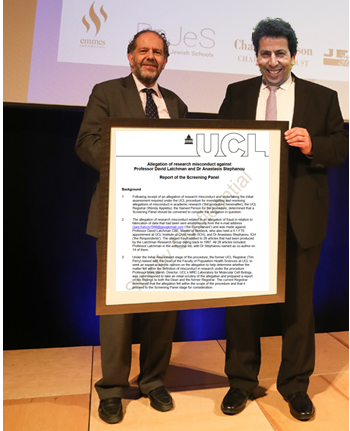
The annual investigations of Latchman between 2014 and 2017 happened because of persistent email notifications by the data integrity sleuth Clare Francis, who also produced much of the PubPeer evidence, which now stands at 68 papers. Every single investigation report found the Master of Birkbeck guilty of research misconduct by recklessness, due to his impressively abysmal supervision and his obsessive desire to be main coauthor on every paper leaving his lab.
This is why Latchman so far retracted only 6 papers (and corrected 2), and not 14, or even 50: exactly because the list of the scrutinised fraudulent literature has been kept secret by UCL even now. Not anymore.
The two respondents in the UCL investigations were Latchman, and Anastasis Stephanou, who works at the European University Cyprus in Nicosia and used to hold a UCL assistant professorship. Another perpetrator who was apparently never himself a respondent at a UCL investigation, is the cardiologist Tiziano Scarabelli. That one was recently sacked by his Virginia Commonwealth University in USA, incidentally after “sexual harassment charges were raised against Scarabelli“, as media reported.
Only half of the 67 Latchman papers discussed on PubPeer have Stephanou and/or Scarabelli as coauthor. But this is exactly why these other remaining 34 papers were never considered for investigation by UCL.
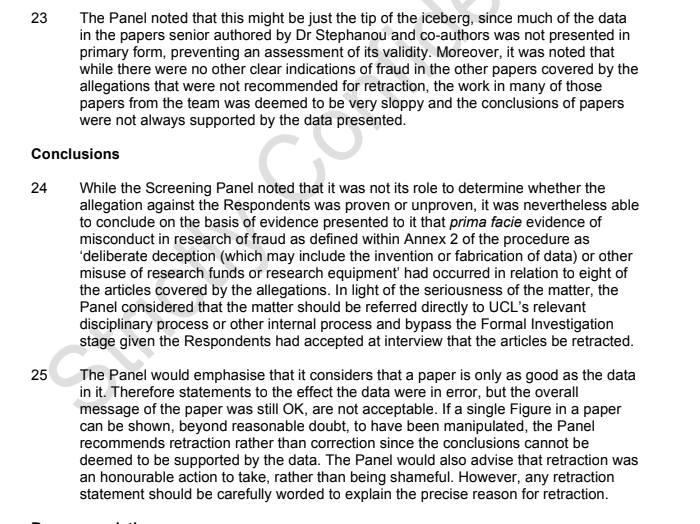
The 2015 investigation, uncensored
In the first investigation from 2014-2015, 28 papers were investigated, and 8 Latchman papers were set for retraction. Only 2 were actually retracted till this day, the other 6 were merely corrected. 6 more papers were screened, but the errors deemed too minor to justify any further investigated. These papers were not even corrected. The report claims the evidence in 14 other Latchman papers was analysed and found to be baseless, but it seems that statement was put in by Latchman’s lawyers. According to the investigator Hardy, there was simply no time to screen those.

The respondents for the “alleged fraud” were Latchman and Stephanou, one other coauthor, Shanie Budhram-Mahadeo, was also interviewed, but not as a respondent. The commission invited the whistleblower Clare Francis to testify, who did not reply. Prior to the main investigation, Professor Mark Marsh, Director of UCL’s MRC Laboratory for Molecular Cell Biology, was “commissioned to take an initial scrutiny of the allegation and prepared a report on his findings to both the Dean and the former Registrar“.
The members of the UCL investigative committee were:
Professor John Hardy (Institute of Neurology) (Chair)
Professor Buzz Baum (MRC Laboratory for Molecular Cell Biology)
Professor Gudrun Moore (Institute of Child Health).
These were the findings, quoted in full, which I supply with hyperlinks, illustrate with PubPeer evidence, and label with current status:
[RETRACTED] ‘STAT-1 facilitates the ATM activated checkpoint pathway following DNA damage’, Journal of Cell Science, 2005, 118, 1629-1639
The Panel considered that the allegations made in respect of Figures 4, 5, and 6 in this article had substance and that the article should be retracted. During the interview Dr Stephanou accepted that, given the original primary data from which he had prepared the Figures no longer existed, the paper needed to be retracted due to fabrication and duplication of bands for different experiments and proteins.
[CORRECTED] ‘KATP Channel Gene Expression Is Induced by Urocortin and Mediates Its Cardioprotective Effect’, Circulation, 2002, 106, 1556-62
The Panel considered that the allegations made in respect of the Actin panels in Figures 2 and 3A and the accompanying Kir6.1 panels had substance and that the article should be retracted. This was accepted by Professor Latchman during interview given that the original primary data concerned, from which the authors had prepared the Figures, no longer existed. Professor Latchman agreed the paper needed to be retracted due to fabrication and duplication of bands from different experiments.
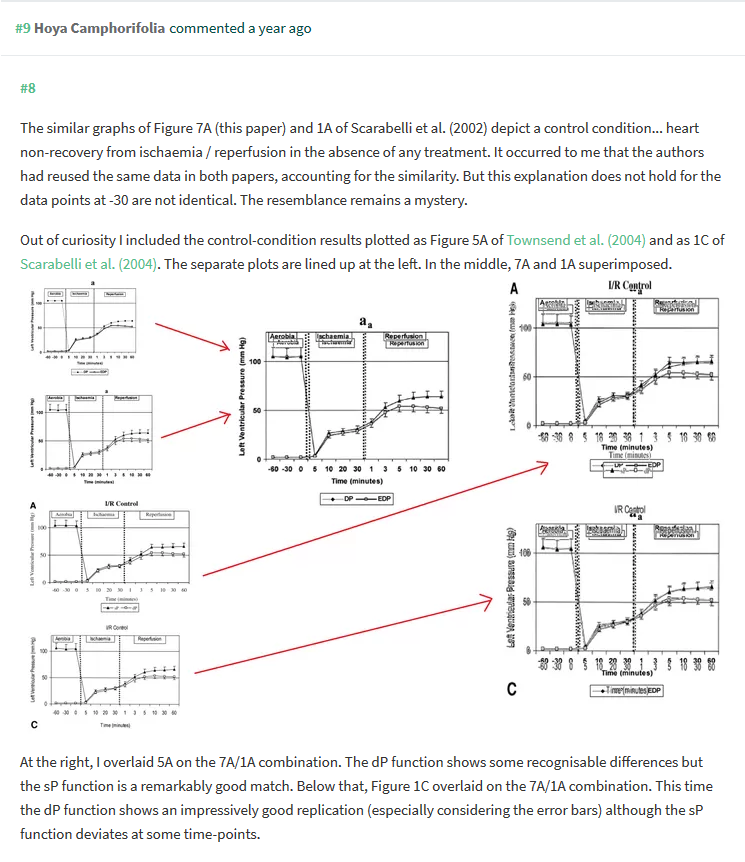
[CORRECTED] ‘Different Signaling Pathways Induce Apoptosis in Endothelial Cells and Cardiac Myocytes during Ischemia/Reperfusion Injury’, Circulation Research, 2002, 90, 745-748
The Panel considered that the Actin loading control in Figure 2 appeared identical in lanes c and d and was of the view that the data had been copied and pasted. This was not considered to be acceptable as they related to two different experiments. The Panel also noted the similarity of the Actin blots in this Figure. This was accepted by Professor Latchman. However, the Panel was told during the interview that the Figure was prepared by one of the other authors. Professor Latchman was named as last author on this paper and therefore held ultimate responsibility for the data. The Panel
considered that the allegations made on this article had substance and that it should be retracted. This was accepted by Professor Latchman during interview.
Subsequent to his interview with the Panel, Professor Latchman informed the Panel Secretary that the Italian collaborators had found the original data for Figure 2c and d. Professor Latchman explained that this showed the work was repeated twice with the appropriate result for cytochrome translocation and Bid processing. In addition, a Figure containing the apparent duplication of the actin data (identical to that published) was present in the Italian data showing, according to Professor Latchman, that this error arose there rather than in his laboratory. The Panel considered that the original data did not alter its findings above and that the article be retracted.
[CORRECTED] ‘STAT1 interacts directly with cyclin D1/Cdk4 and mediates cell cycle arrest‘, Cell Cycle, 2010, 9(23), 4638-49
The Panel discussed this paper in detail at interview with Dr Stephanou. The Panel found that in relation to Figure 1, the numbers in the corresponding text were different to the Figure it referenced. The Panel queried the blot intensities in Figure 2a and noted that in Figure 2b, lane 5, the 3 pattern of bands in lanes 5 and 6 of 2b were identical to those in lanes 1 and 2 of Figure 2c even though they represented different types of experiment. The Panel also found that in Figure 3A, the p-STAT bands in the
input were identical to those in the STAT1-GST, even though the STAT-GST protein in the latter panel was made in bacteria, where no phosphorylation was expected to take place. The Panel learnt that this article was based on the PhD thesis of the first author who was formerly primarily supervised by Dr Stephanou and who had prepared Figure 3A. The Panel also found that the GAPDH panels in Figure 4 were identical to the bands from the control in Figures 5a and 5c, and contained a floating pasted arrow. In addition, Figure 6 contained a number of instances of splicing as if assembled using extensive Adobe Photoshop manipulation. The Panel considered that the allegations made on this article had substance and that it should be retracted due to fabrication and duplication of bands and controls for different experiments, and this was accepted by Dr Stephanou and Professor Latchman during interview given the original primary data concerned no longer existed that could have been used to confirm the Figures.
[RETRACTED] ‘Antiapoptotic activity of the free caspase recruitment domain of procaspase-9: a novel endogenous rescue pathway in cell death‘, Journal of Biological Chemistry, 2002, 277, 13693-9
[CORRECTED]‘Apoptosis of endothelial cells precedes myocyte cell apoptosis in ischemia/reperfusion injury’, Circulation, 2001, 104, 253-6
Professor Latchman accepted the two allegations made in respect of Figure 1d in the J Biol Chem article above with Figure 2d in the Circulation article as it appeared that the same Figure had been used in both articles. The Panel considered that the allegations made on these articles had substance and that the articles should be retracted. This was accepted by Professor Latchman during interview given that the original primary data concerned, which could have been used to confirm the data presented in the Figures, no longer existed.
Subsequent to his interview with the Panel, Professor Latchman supplied the Panel Secretary with the original data that had been found for the experiment in Figure 2d. Professor Latchman explained, via email, that the data showed the work was repeated twice (independently of the published figure) with the appropriate result showing caspase 3 processing. The Panel considered that the original data did not alter its findings above that the article should be retracted.
‘Urocortin increases the expression of heat shock protein 90 in rat cardiac myocytes in a MEK1/2-dependent manner’, Journal of Endocrinology, 2002, 172, 283-93
‘Cardiotrophin-1 can protect cardiac myocytes from injury when added both prior to simulated ischaemia and at reoxygenation’, Cardiovascular Research, 2001, 51, 265-74
The Panel briefly discussed the set of papers above with Professor Latchman who noted that it was common previous practice to insert a line within a panel and prior to that to use markers. Professor Latchman said that researchers within his Lab were trained not to seamlessly splice data to generate Figures, and considered that the allegations related to practice at the time concerning the presentation of the Figures.
The Panel determined that there was no prima facie evidence of research misconduct in relation to these articles and that the allegations could not be pursued further.
The Brn-3b POU family transcription factor represses plakoglobin gene expression in human breast cancer cells’, International Journal of Cancer, 2006, 118, 869-78
‘Activation of CDK4 Gene Expression in Human Breast Cancer Cells by the Brn-3b POU Family Transcription Factor, Cancer Biology and Therapy, 2004, 3, 317-23’
The Panel found that the allegations made in respect of the above two articles had been raised separately by ‘Clare Francis’ with the Editor of the Int J Cancer earlier this year. The journal had sought information from Professor Latchman and were satisfied with the response supplied and closed the case. The Panel determined that the allegations did not need to be pursued further.
[CORRECTED] ‘The Brn-3b transcription factor regulates the growth, behavior and invasiveness of human neuroblastoma cells in vitro and in vivo‘, Journal of Biological Chemistry, 2004, 279 (20), 21617-27
The Panel invited Dr Budhram-Mahadeo to interview to discuss the article above and the one below at paragraph 13k. The Panel was impressed by the written response supplied by Dr Budhram-Mahadeo to the Panel’s request for information about both these articles and confirmed that the allegations were not made against her. As indicated in her written response, Dr Budhram-Mahadeo accepted that there had been errors with the cells in relation to Figures 4 and 4B in the J Biol Chem (2004) article and that the images were for different experiments. However, the Panel advised that unless an experiment was repeated the researcher could not be certain
that the data shown was correct. The Panel considered that the allegations made on this article had substance and that it should be retracted, rather than the individual Figure alone being corrected, since there were multiple errors and it was hard to justify to a journal that multiple errors in a Figure be corrected simply by way of a correction. The Panel indicated that it would be able to comment on any draft retraction statement.
[CORRECTED] ‘Brn-3a transcription factor blocks p53-mediated activation of proapoptotic genes Noxa and Bax in vitro and in vivo to determine cell fate‘, Journal of Biological Chemistry, 2005, 280 (12), 11851-8
[13k] The Panel considered that there were a number of issues in relation to the Figures in this article and found that there had been a mix up with the gels as well as incorrect labelling. In relation to Figure 4, the Panel and Dr Budhram-Mahadeo agreed that the right Actin lanes were identical to the left Actin panel. In summary, the Panel considered that this article should be retracted; this recommendation was accepted by Dr Budhram-Mahadeo at interview. As above, the Panel indicated that they would be able to comment on any draft retraction statement.
Although not a Respondent in this matter, Dr Budhram-Mahadeo considered the Panel’s recommendations at interview and explained that (i) the articles at paragraphs 13j and 13k above were circulated to all authors for checking prior to submission, (ii) any errors made in relation to these articles were unintentional and (iii) she was unaware of them upon their publication. The Panel noted that Dr Budhram-Mahadeo had accepted responsibility and was satisfied by this explanation given in mitigation. The Panel subsequently noted that these articles have not been retracted.
‘The Brn-3a Transcription Factor Induces Neuronal Process Outgrowth and the Coordinate Expression of Genes Encoding Synaptic Proteins’, Molecular and Cellular Biology, 1997, 17, 345-354
‘Inhibition of Neuronal Process Outgrowth and Neuronal Specific Gene Activation by the Brn-3b Transcription Factor’, Journal of Biological Chemistry, 1997, 272, 1382- 1388
The Panel noted that both the above articles were published back in 1997 and that the allegations made related to one Figure that was not cross referenced between both articles. Professor Latchman explained that the he had tried to publish both papers as a single article but the journals concerned considered that there was too much information for a single article. The Panel suggested that the experiment could have been repeated and that it should have been clearly referenced, as it was not acceptable to present the same image without a reference. Whilst Professor Latchman accepted the Panel’s comment, he argued that while this might not be
optimum practice he did not consider it to be bad practice. The Panel determined that the allegations lacked substance and did not need to be pursued further.
The Panel also considered the remaining allegations made by ‘Clare Francis’ on the other 14 articles and determined that there was no clear-cut prima facie evidence of research misconduct that needed to be pursued further. “
According to the investigator Hardy, the latter statement in the report is incorrect: these other 14 paper were simply not investigated, for lack of time. Please appreciate Latchman’s now uncensored explanations:
“During interview, Professor Latchman also made the following points in mitigation:
- Professor Latchman explained that he considered the tone of the emails sent by the Complainant to be vitriolic towards him personally and that he did not accept that he was a ‘fraudster’ as had been stated within one of the Complainant’s emails.
- Professor Latchman noted that the number of articles covered by the allegations represented a small part of his total research output produced during his academic career to date (some 250 papers).
- Moreover, some of the articles that had been examined dated back to 1997 and it was likely that there had been some 25 breakthrough papers on the research concerned subsequently.
- It was noted that the data image technology and software now available was far more advanced than that available at the time that the older articles covered by the allegations were produced.
- Professor Latchman was made Head of Department of Molecular Pathology at UCL in 1991, and moved to ICH to become Director in 1999, and as part of that appointment he secured a lectureship post that was now filled by Dr Budhram-Mahadeo. Dr Stephanou was employed as a post doctoral researcher and led the cardiovascular biology group in the Latchman Group. Professor Latchman was keen to develop the research careers of his colleagues and started to use corresponding author status on work produced by Drs Budhram-Mahadeo and Stephanou. He subsequently became last author on their work so as not to hinder their academic development. However, Professor Latchman noted that Dr Stephanou still included his name on his publications, although his role as last author was advisory given the work concerned was developed independently. Professor Latchman accepted that whilst it might be mistaken for him to continue to be named as last author, he did so to help both Dr Stephanou and Dr Budhram-Madaheo in their applications for grant funding and promotion.
- Professor Latchman did not personally prepare any of the data in the articles covered by the allegations, nor did he directly supervise all researchers in his Lab.
- Professor Latchman remains as Head of the Medical Molecular Biology Unit at ICH, located at the Rayne Institute at UCL, as having Head status allowed him to sign off grant applications by researchers in his Lab. He was also both Drs Stephanou and Budhram-Mahadeo’s line manager.
Next to 8 retractions (of which only 2 happened, courtesy of UCL and Latchman), these were the main conclusions which UCL report decided to censor:
- “The Panel found that all the articles that had prima facie evidence of research misconduct supporting the allegations of fraud were produced by the Cardiovascular Biology sub-group headed by Dr Stephanou. In light of the Panel’s findings, the Director of ICH and Dr Stephanou’s Head of Department are invited to consider the appropriateness of his supervision of research students and whether it is appropriate that he be allowed to publish papers and write grant proposals.
- That Dr Stephanou consider the appropriateness of serving as Editor in Chief of JAK-STAT given the Panel’s findings above including that two articles he senior authored be retracted, and given the involvement of his other co-editors in these papers.“
In unprecedented solidarity with its captain Stephanou, the entire journal JAK-STAT, published by Taylor & Francis, went down in 2017. Its last issue appeared in 2016.
The 2016 investigation, uncensored

While the first investigation was still ongoing, Clare Francis sent UCL a list of 32 publications from Latchman’s group, which appeared in the period 1990–2013. A new expert panel was appointed, consisting of
- Professor Claudio Stern, Division of Biosciences (Chair)
- Dr Hannah Mitchison, Institute of Child Health
- Professor Patricia Salinas, Division of Biosciences
The panel interviewed both respondents, Latchman in person, Stephanou by video conference. This committee screened only 6 papers of the 32, and did not decide on retractions, but whether misconduct has occurred and a further investigation was merited. This was the conclusion:
“Having considered the evidence and interviewed the Respondents, the Screening Panel determined (a) that there is clear evidence that some of the figures within some of the articles covered by the allegations have been fabricated; (b) that such fabrications are highly unlikely to have occurred by accident, given the nature of the manipulations, the extended time period over which they have taken place and the number of such manipulations that had been uncovered; and (c) that at least in some cases the apparent fabrication of these figures had been fundamental to, rather than incidental to, the conclusions reached in the publications concerned. In the panel’s view the evidence clearly indicates that the researchers in the laboratory had developed a culture outside the accepted standards of research integrity. The panel felt that it was not in a position to assess the extent of responsibility of each individual Respondent or of any other of the authors, but noted that such activities appeared to have been taking place over an extended period of time and, based on the authorship lists, to involve more than one individual.
While the Screening Panel noted that it was not its role to determine whether the allegation against the Respondents was proven or unproven, it was nevertheless satisfied that there is prima facie evidence of misconduct in research as defined within Annex 2 of the procedure, and that this is sufficiently serious and of sufficient substance to justify a Formal Investigation to determine whether such misconduct has indeed taken place, and if so who was responsible.”
The investigators also proposed to widen the investigation to include not just the two respondents, Latchman and Stephanou, but also Richard Knight, Tiziano Scarabelli and Shanie Budhram-Mahadeo. This however, apaprently did not happen.
The following are the six papers analysed, as a direct quote, again annotated and illustrated by me. Though no recommendations were made by that commission, it is quite clear that retractions were decided upon at later stage. Yet in several cases, not implemented.
[RETRACTED] ERK and the F-box Protein βTRCP Target STAT1 for Degradation
Journal of Biological Chemistry, 283, 16077-16083 (2008), Fig. 1A
The panel reviewed the evidence in the allegation that the GAPDH control image at the lower left of this figure had been rotated horizontally and through 180 degrees to produce the loading controls corresponding to the experimental conditions in the image to its right. The panel was able to recreate the alleged manipulation to produce one image from the other. The panel further noted that the two images had then been used to calculate the differences between the two conditions (control untreated and experimental lactacystin-treated samples) and that these had been plotted in the graph contained in that figure, on which some of the key the conclusions of the paper were based.
[RETRACTED] Cardiac release of urocortin precedes the occurrence of irreversible myocardial damage in the rat heart exposed to ischemia/reperfusion injury, FEBS Letters, 582, 984-990 (2008). Figs 5a / 1a
The panel reviewed the evidence for the suggestion that Fig 5a included a cropped and flipped section of the image at Fig. 1a. The panel was able to demonstrate the alleged manipulation by superimposing one image over the other. The panel noted that the image could not represent both a control and an experimental case.
Proliferation-associated Brn-3b transcription factor can activate cyclin D1 expression in neuroblastoma and breast cancer cells, Oncogene, 27, 145- 154 (2008), Figure 2B
The panel considered the suggestion that the image of the pair of gels at the
lower right of figure 2A(b) had been flipped and reused from the 2004 publication
[CORRECTED] The Brn-3b Transcription Factor Regulates the Growth, Behaviour, and Invasiveness of Human Neuroblastoma Cells in Vitro and in Vivo, J Biol. Chem. 279, 21617-21627 (2004), Fig. 1B.
The panel was able to recreate the alleged manipulation by superimposing one image over the other. Professor Latchman noted the practice whereby referees would sometimes ask authors to include characterisation of the cell lines used. However the panel pointed out that all mainstream journals require authors to disclose previous publication of any data so at best this would appear to be a case of self-plagiarism and infringement of the copyright policies of both journals.
[RETRACTED] Enhanced IL-17 signalling following myocardial ischaemia/reperfusion injury, Int. J. Cardiol., 163, 326-334 (2013), Figure 5B
The panel reviewed the evidence for the suggestion that the images labelled Control, I/R and I/R+IL-17n both used a section of the same image, with additional features (yellow TUNEL labelled nuclei representing dying cells) having been either added or taken away, and was able to demonstrate the alleged manipulation by superimposing one image over another. The panel
further noted that one image stated to represent human tissue appeared to be identical to an image claiming to be from rat tissue from an earlier paper, Minocycline Inhibits Caspase Activation and Reactivation, Increases the Ratio of XIAP to Smac/DIABLO, and Reduces the Mitochondrial Leakage of Cytochrome C and Smac/DIABLO, Journal of the American College of Cardiology, 43 (2004).
[RETRACTED] The carboxyl-terminal activation domain of the STAT-1 transcription factor enhances ischemia/reperfusion-induced apoptosis in cardiac myocytes
FASEB J., 16, 1841-1843 (2002), Figure 5C
The panel reviewed the evidence for the suggestion that the lower left-hand image in Fig 5C (labelled STAT-1 +/+ I/R) partially duplicated the upper right-
hand image labelled STAT-1 -/- Control, with additional features either added or removed, and concurred that this appeared to be the case. Additionally there was agreement of partial duplication between (1) the upper and lower left-hand panels marked STAT-1 +/+ Control and STAT-1 +/+ I/R and (2) the upper left-hand and right-hand panels marked Control STAT-1 +/+ and Control STAT-1 -/-.
[CORRECTED] Minocycline inhibits caspase activation and reactivation, increases the ratio of XIAP to smac/DIABLO, and reduces the mitochondrial leakage of cytochrome C and smac/DIABLO. J. Am. Coll. Cardiol 43, 865 (2004)
The panel concurred with the suggestion that the gel in Figure 5B appeared to have been manipulated and reused in J Thorac Cardiovasc Surg 148, 2296
(2014), Figure 3A, and that the different spacing between the actin bands
indicated that these figures could not have been taken from the same gel. The panel noted that Professor Latchman was not among the authors of this 2014 paper; in discussions with the panel, Professor Latchman indicated that this work had been carried out by Tiziano Scarabelli.
It is the view of the panel that such examples as those listed above suggest manipulation of images in a manner that could not have occurred by accident. In discussions on 23 June both respondents accepted that, in at least some cases, some sort of inappropriate manipulation of images did appear to have occurred. On this basis, the panel concludes that there is sufficient prima facie evidence of misconduct within this body of publications to justify a Formal Investigation.”
And then, the blame game started, as we can read in the commission’s report:
“Dr Stephanou’s expertise was in cardiovascular biology and biochemistry; he advised the Screening Panel that he was involved in the production of gels and blots, but not with microscopy. Tissue sections were generally produced by Tiziano Scarabelli. Dr Scarabelli had come to UCL on a Fellowship in order to work with Professor Derek Yellon on improvements to a method of staining sections of cardiac tissue to reveal dying cells. Upon completion of the Fellowship he was invited to carry out a PhD under Professor Latchman’s supervision. He subsequently moved to Wayne State University in Detroit, where he published some of the papers included in the allegation on which he is listed as lead author. Professor Latchman suggested that he (Professor Latchman) may not have seen all of the primary data in these cases, unless they had been generated prior to Dr Scarabelli’s departure from UCL. […]
Dr Stephanou stated that his meetings continued periodically after Professor Latchman’s appointment as Master of Birkbeck. Professor Latchman stated that the two groups rapidly became relatively independent, with their two sub-group heads meeting with him approximately every two months. Professor Latchman’s external grant income declined as a result of his heavy responsibilities at Birkbeck, and he claimed that within 2-4 years he was no longer leading any element of the laboratory’s activity. Nevertheless, the panel noted Professor Latchman’s observation that he was engaged in negotiations with UCL to relocate his laboratory from the ICH and into the Division of Medicine until 2011, and concluded that the groups could not therefore be formally considered as truly independent prior to that time.”
Latchman is still Master of Birkbeck. He is removed from supervising PhD students, but still in charge of recruitments and supervision of Birkbeck professors and group leaders. And he largely escaped retractions.

Donate!
If you are interested to support my work, you can leave here a small tip of $5. Or several of small tips, just increase the amount as you like (2x=€10; 5x=€25). Your generous patronage of my journalism will be most appreciated!
€5.00

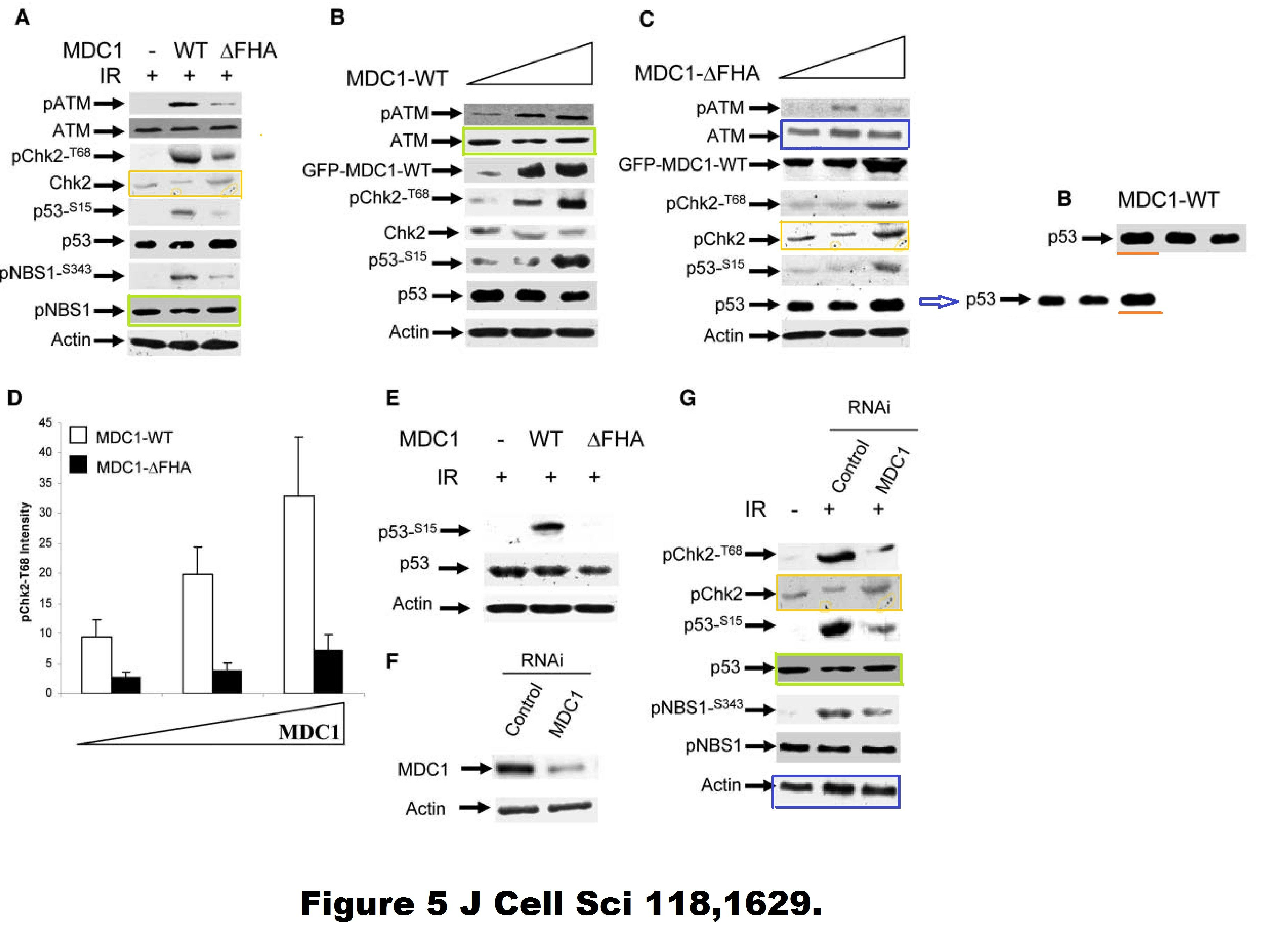
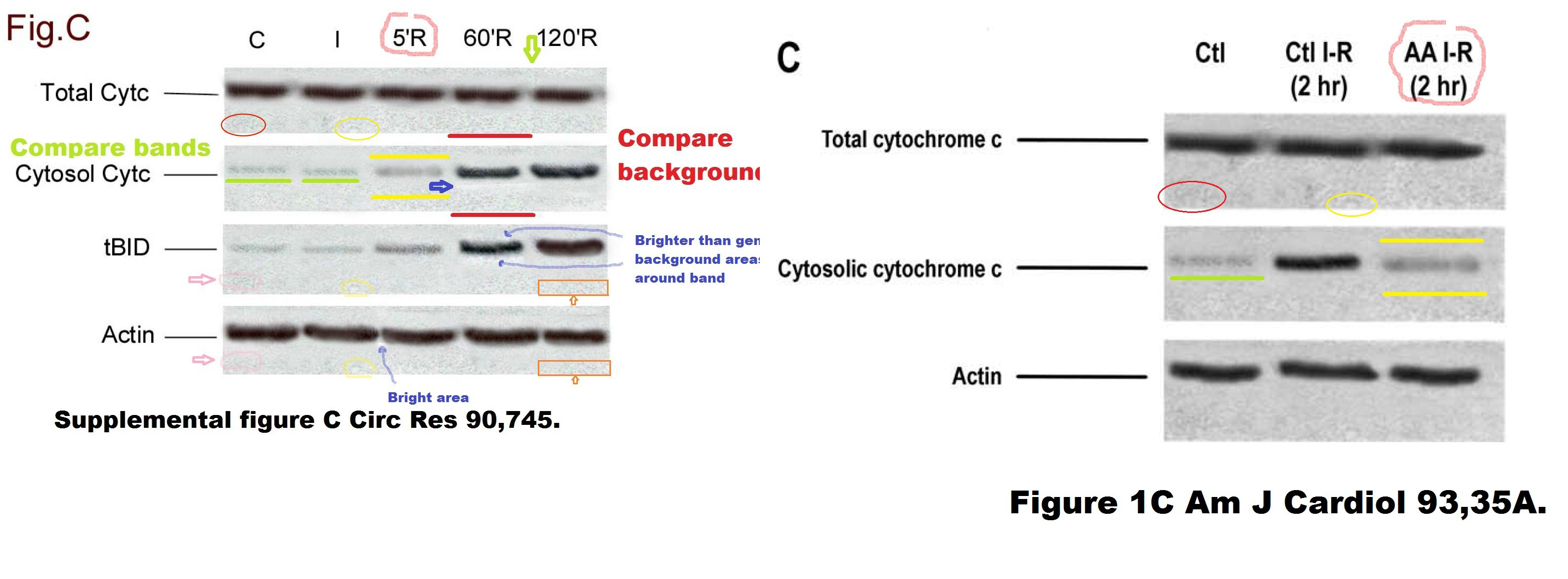
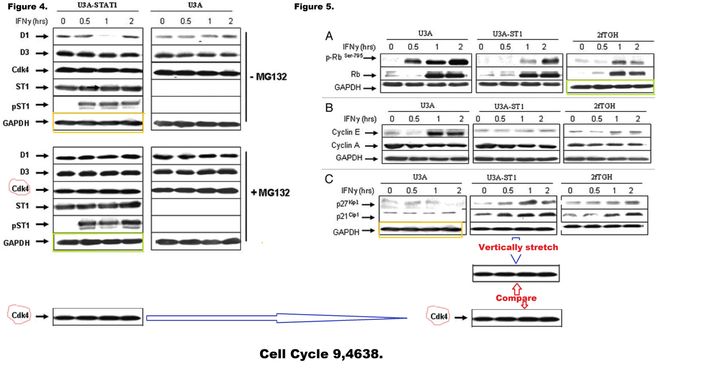
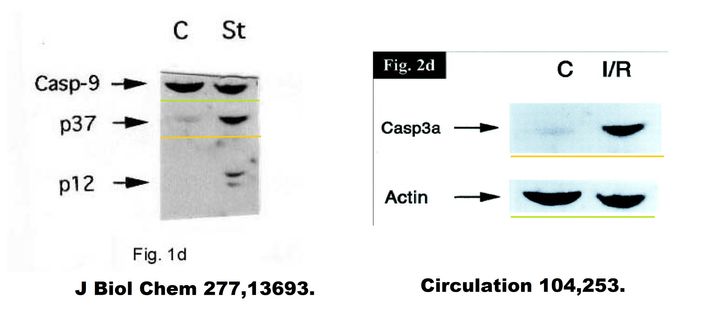
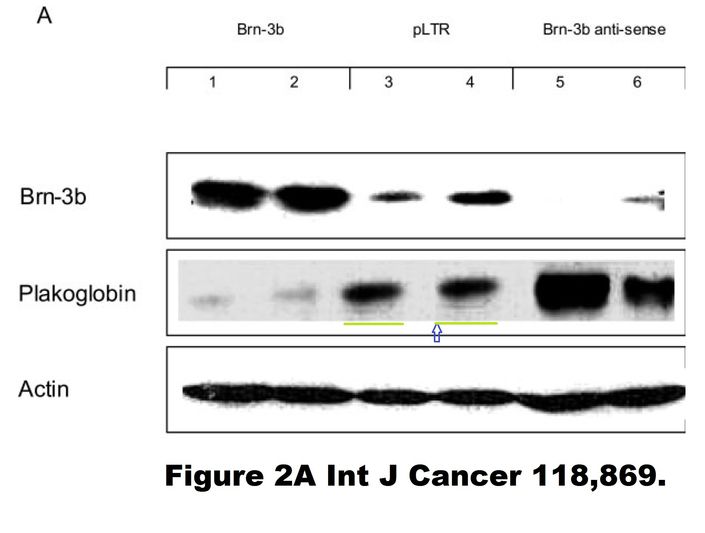
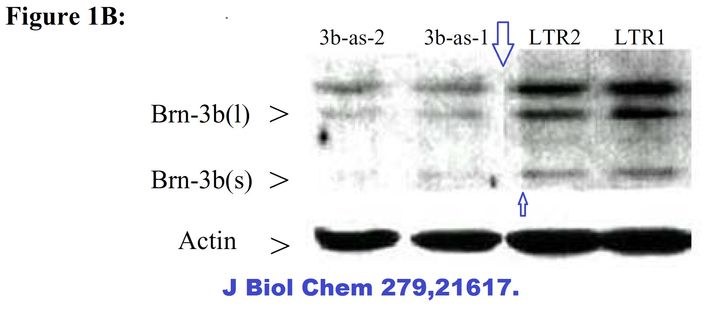


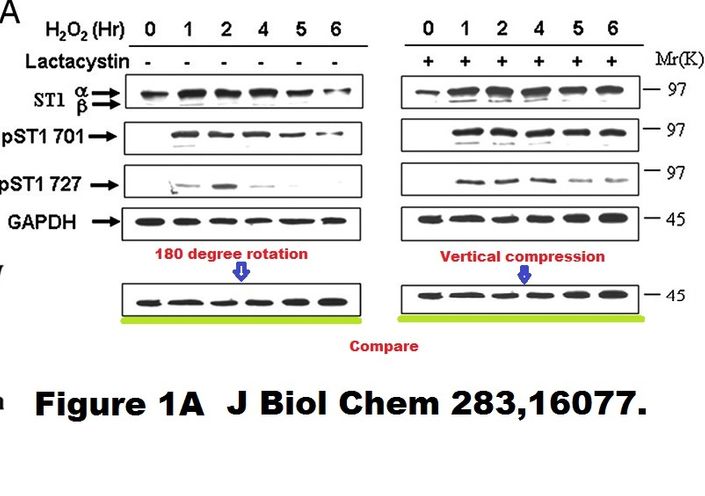

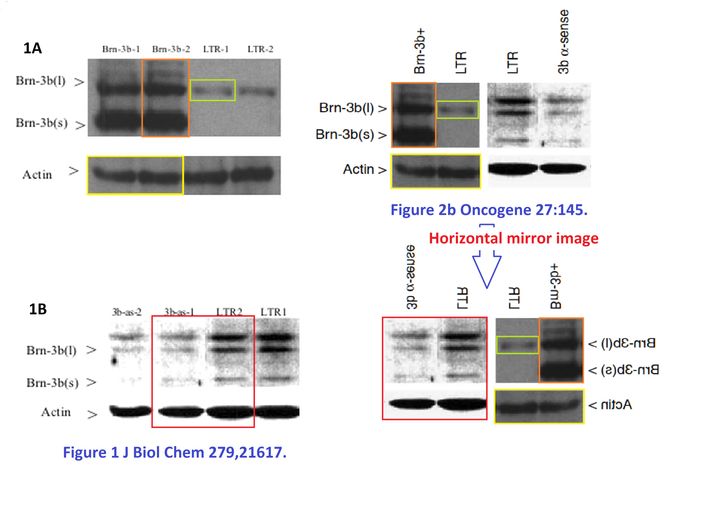
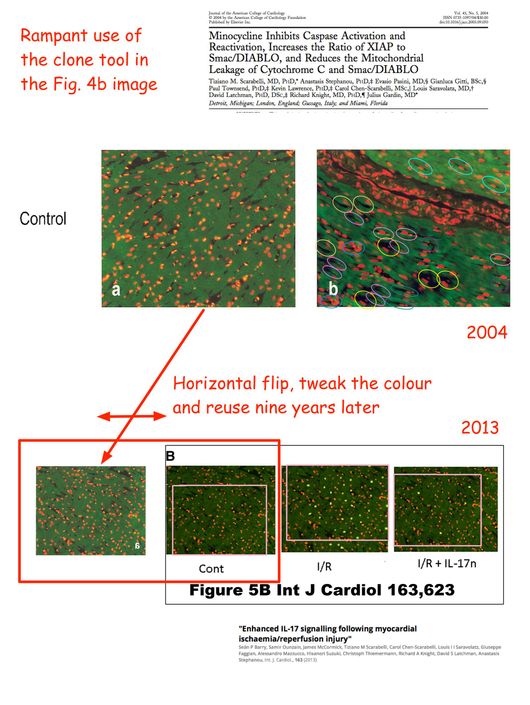
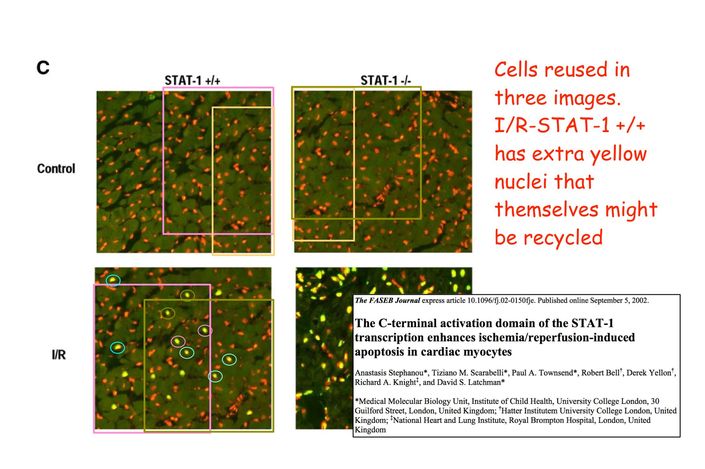
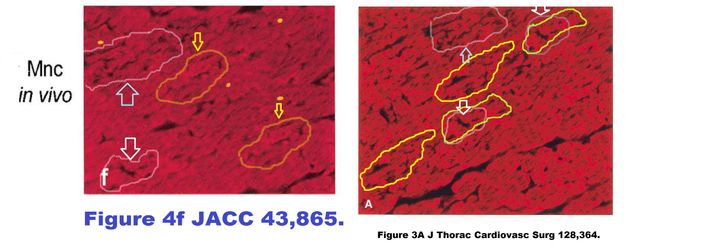
Unfortunately, in science, health or other areas sometimes there is data fabrication just for promotion or economic reasons. Very common practice that will not benefit anyone except the own cheaters.
LikeLike
Even JBC let them weasel out of obvious fraud. Sad. I know it’s a pay to play world out there in cancer research, but you would hope that the core journals might have some ethics.
LikeLike
I am extremely upset and ashamed to be a member of UCL academic staff. David Latchman has used his enormous financial resources to get Mishcon de Reya to scare UCL and Birkbeck to block his dismissal. This is the biggest fraud scandal in UK science since Piltdown Man. I have total admiration for you, Dr Schneider, and the heroic John Hardy for your bravery and integrity in calling out this shameless fraudster. I don’t understand why the Guardian or the Telegraph while reporting the issue have not given some of the details that show Latchman’s extraordinary behaviour in perpetrating the fraud then throwing his employees under a truck. John Hardy’s remarkable and eloquent email should be published in Nature and Science immediately. I am looking to leave UCL as soon as possible, this place has lost its soul.
LikeLike
UCL and Birkbeck College fully condone research fraud, extraordinary. https://www.theguardian.com/education/2020/feb/01/david-latchman-geneticist-should-resign-over-his-team-science-fraud
LikeLike
2020 article.
https://www.buzzfeednews.com/article/peteraldhous/a-uk-university-knew-of-problems-in-a-top-geneticists-lab
Problematic paper (no data) identified.
“But when Anastasis Stephanou, who led a research group at University College London studying the biology of heart disease, was asked for the data behind a 2006 paper whose results were being called into question, he was unable to provide it.The incident, described in a 2007 email obtained by BuzzFeed News, shows that some UCL officials were aware of concerns about data fraud in research overseen by leading geneticist David Latchman, in whose lab Stephanou worked, more than a decade before launching a formal investigation.”
The hyperlink from “2006 paper” is https://www.ncbi.nlm.nih.gov/pubmed/16697404
J Mol Cell Cardiol. 2006 Jun;40(6):846-52. Epub 2006 May 12.
Urocortin inhibits Beclin1-mediated autophagic cell death in cardiac myocytes exposed to ischaemia/reperfusion injury.
Valentim L1, Laurence KM, Townsend PA, Carroll CJ, Soond S, Scarabelli TM, Knight RA, Latchman DS, Stephanou A.
Author information
1
Medical Molecular Biology Unit, Institute of Child Health, University College London, 30 Guilford Street, London, WC1N 1EH, UK.
See problematic data posted 5 years ago: https://pubpeer.com/publications/D075F9AE6DE4D5D26F46C8D727377D
LikeLike
J Mol Cell Cardiol. 2006 Jun;40(6):846-52 continued.
Figure 5B. Much more similar than you would expect.
LikeLike
Multi-millionaire cynic and relentless scientific fraudster David Latchman CBE has a few kind words for the poor people:
https://www.google.co.uk/amp/s/amp.theguardian.com/education/2020/may/05/to-stop-poorer-students-giving-up-on-university-we-must-offer-them-places-now
LikeLiked by 1 person
Pingback: The English science supremacy – For Better Science
https://www.nature.com/articles/s41388-023-02614-9
Correction
Published: 09 February 2023
Correction: Proliferation-associated Brn-3b transcription factor can activate cyclin D1 expression in neuroblastoma and breast cancer cells
V. S. Budhram-Mahadeo, S. Irshad, S. Bowen, S. A. Lee, L. Samady, G. P. Tonini & D. S. Latchman
Oncogene (2023)
The Original Article was published on 16 July 2007
Correction to: Oncogene (2008) 27: 145–54 https://doi.org/10.1038/sj.onc.1210621, published online 16 July 2007
Since the publication of our article, it has come to our attention that the legend of Fig. 2 did not acknowledge that this figure had been adapted from a published source (Irshad et al., 2004).
The legend in Fig. 2 should read as follows:
Figure 2:
Brn-3b correlates with cyclin D1 in cell lines and tumour biopsies. (A)(i)(a) Representative western blot analysis showing increased cyclin D1 protein in IMR32 cells overexpressing Brn-3b (Brn-3b+) and lower levels in cells with reduced Brn-3b (3b α-sense) compared with LTR1 (vector) control. (b) Brn-3b protein expression in stably transfected cells lines either overexpressing Brn-3b or with antisense to reduce its levels. [Adapted with permission from Figure 1 (Irshad et al., 2004)]. (ii) Quantification of cyclin D1 protein in IMR32 cells expressing different levels of Brn-3b by scanning densitometry of three independent experiments. (iii) Reduction of Brn-3b in MCF7 cells using Brn-3b antisense results in a corresponding decrease in cyclin D1 protein levels compared with vector control cells. (B)(i) Correlation of Brn-3b mRNA with cyclin D1 levels in tumour samples. qRT–PCR was used to quantify human cyclin D1 (TaqMan Gene Expression Assay, hCG2016647 (Applied Biosystems)) and GAPDH levels were used to adjust for variability. Regression analysis was carried out using Sigma plot. (i) The significant relationship between cyclin D1 and Brn-3b (R = 0.55) in NB biopsies, which was unique since (ii) shows poor correlation between Brn-3b and cyclin E mRNA in these samples (R = 0.0002). (C) Significant correlation between Brn-3b mRNA with cyclin D1 in breast cancer biopsies following qRT–PCR (R = 0.85). Breast cancer RNAs were obtained from Candis Tissue Bank (Liverpool, UK) and CR-UK Hedley Atkins Breast Pathology Laboratory (Guy’s Hospital, London). LTR, long terminal repeat; NB, neuroblastoma.
Author information
Authors and Affiliations
Medical Molecular Biology Unit, Institute of Child Health, University College London, London, UK
V. S. Budhram-Mahadeo, S. Irshad, S. Bowen, S. A. Lee, L. Samady & D. S. Latchman
Translational Paediatric Oncology, National Institute of Cancer Research (IST), Genoa, Italy
G. P. Tonini
Corresponding author
Correspondence to V. S. Budhram-Mahadeo.
LikeLike
Nice.
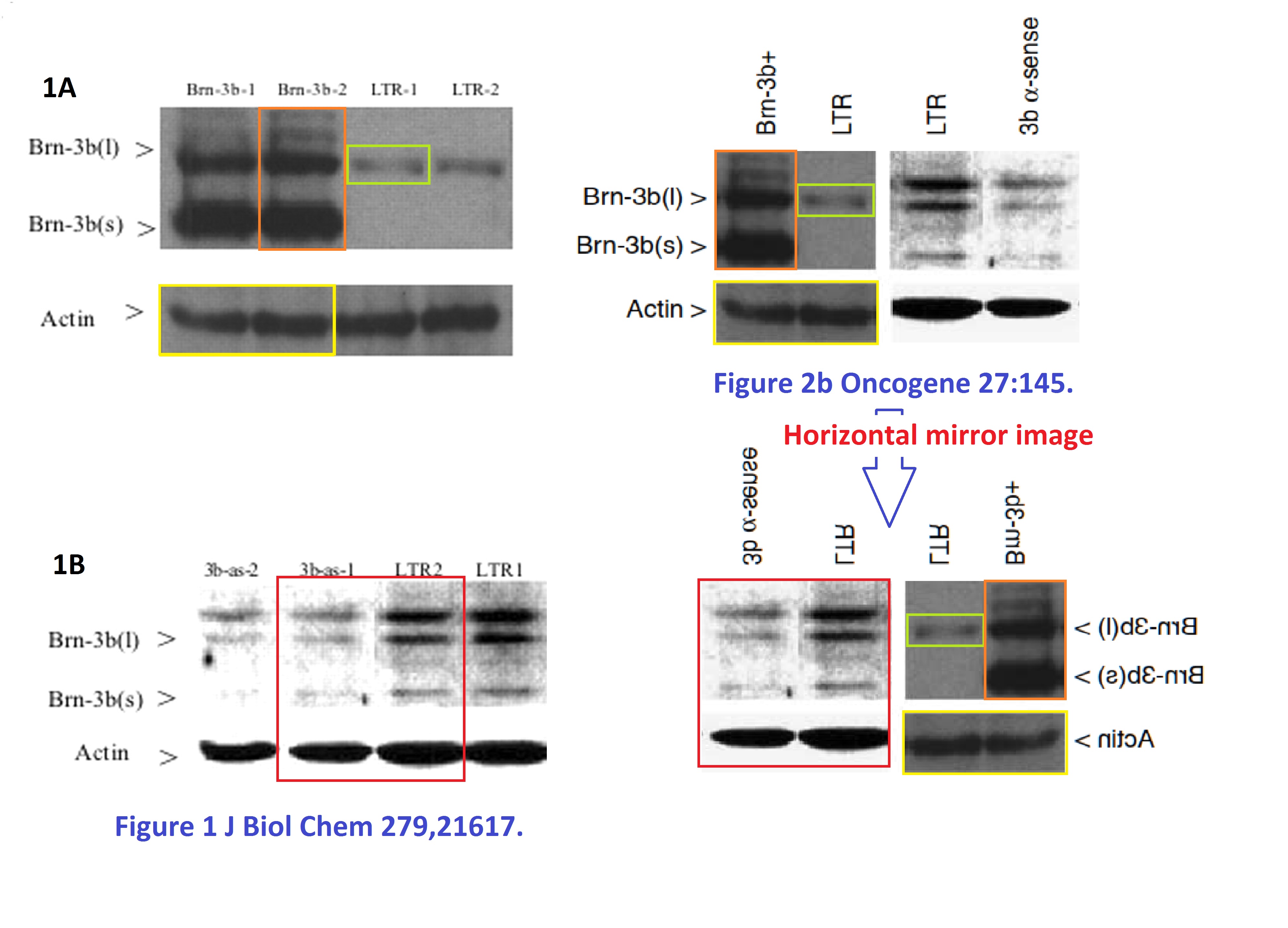
https://pubpeer.com/publications/016F22871988C23F342A0E9EAC71E6
LikeLike
https://www.bbk.ac.uk/news/professor-david-latchman-not-at-fault-in-management-of-ucl-programme-says-letter-authored-by-birkbecks-chair-of-governors-and-president
You can always trust the British to tell the truth! Lying together!
LikeLike
David Latchman’s lawyers only fined 0.25% of turnover for money laundering!
https://www.theguardian.com/law/2022/jan/06/top-uk-law-firm-fined-record-sum-serious-money-laundering-rule-breaches-mishcon-de-reya
LikeLike